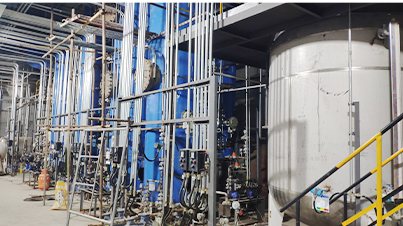water treatment flocculation chemicals
The Role of Flocculation Chemicals in Water Treatment
Water is an essential resource for all forms of life, yet access to clean and safe water remains a challenge in many parts of the world. The treatment of water, especially in urban areas, involves several processes to remove impurities, pathogens, and other harmful substances. One critical stage in this process is flocculation, which utilizes specific chemicals to enhance sedimentation and clarify water. This article explores the types of flocculation chemicals used in water treatment, their mechanisms, and their significance in producing potable water.
What is Flocculation?
Flocculation is the process of aggregating suspended particles in water to form larger clumps, or flocs, which can then be easily removed through sedimentation or filtration. This process is a key step in the treatment of both drinking water and wastewater. It involves the use of chemical additives that destabilize suspended particles, allowing them to collide and coalesce into larger aggregates that can settle more effectively.
Types of Flocculation Chemicals
1. Coagulants The most commonly used flocculation chemicals are coagulants. These substances are typically positively charged ions that neutralize the negative charge of suspended particles in the water. Some widely employed coagulants include aluminum sulfate (alum), ferric chloride, and polyaluminum chloride. By neutralizing the charges, coagulants promote the aggregation of particles.
2. Flocculants After coagulation, flocculants are introduced to enhance the formation of larger flocs. Flocculants can be synthetic organic polymers or natural substances such as starch or chitosan. These polymers have long chains that interlink the smaller particles into larger structures, increasing the efficiency of sedimentation.
3. pH Adjusters The effectiveness of flocculation often depends on the pH of the water being treated. Chemicals like lime (calcium hydroxide) or sodium carbonate can be used to adjust pH levels, thereby optimizing the conditions under which coagulants and flocculants operate.
water treatment flocculation chemicals

4. Other Additives Depending on the specific requirements of the water being treated, additional chemicals such as bactericides or other disinfectants may be added to the treatment process to ensure the removal of pathogens along with suspended solids.
Mechanism of Action
The mechanism behind flocculation involves a series of steps. Initially, during coagulation, coagulants bind to the particles in the water, neutralizing their charges and allowing them to come closer together. This collision leads to the formation of micro-flocs, which are then encouraged to cluster into larger flocs by the addition of flocculants. The larger flocs settle more rapidly, allowing for effective removal from the water.
Environmental Considerations
While flocculation chemicals are crucial for effective water treatment, their usage must be balanced with environmental considerations. Overuse of certain chemicals can lead to the production of sludge that must be disposed of properly. Furthermore, residual chemicals may pose risks to aquatic life if water is not treated thoroughly before being discharged. Therefore, water treatment facilities must monitor and manage the chemical dosages carefully to minimize environmental impact.
Conclusion
Flocculation chemicals play a pivotal role in the treatment of water, ensuring that it is safe for consumption and free from harmful impurities. By understanding the types of chemicals used and their mechanisms, water treatment professionals can optimize their use to enhance the efficiency of the flocculation process. As the demand for clean water continues to grow, the development and implementation of more efficient, environmentally friendly flocculation chemicals will be crucial in addressing global water challenges. Through effective water treatment practices that include responsible use of flocculation chemicals, we can move toward a future where access to clean water is a reality for everyone.
-
Water Treatment with Flocculant Water TreatmentNewsJun.12,2025
-
Polymaleic AnhydrideNewsJun.12,2025
-
Polyaspartic AcidNewsJun.12,2025
-
Enhance Industrial Processes with IsothiazolinonesNewsJun.12,2025
-
Enhance Industrial Processes with PBTCA SolutionsNewsJun.12,2025
-
Dodecyldimethylbenzylammonium Chloride SolutionsNewsJun.12,2025





